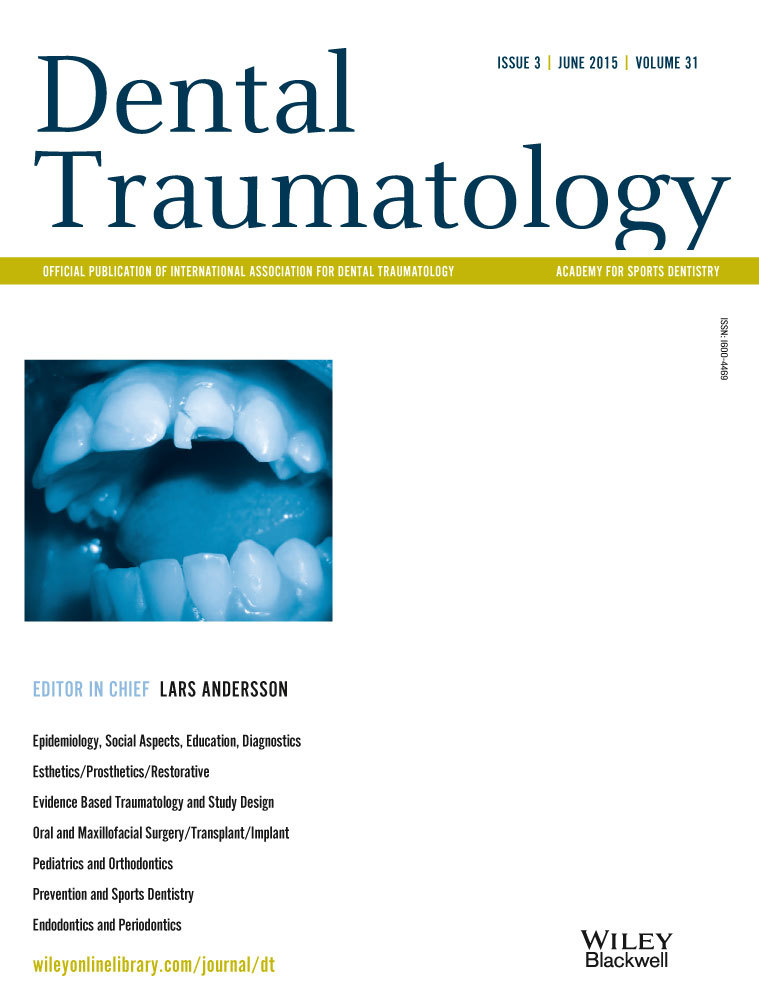Stress distribution in delayed replanted teeth splinted with different orthodontic wires: a three-dimensional finite element analysis
Abstract
Aim
The aim was to evaluate the biomechanical behavior of the supporting bony structures of replanted teeth and the periodontal ligament (PDL) of adjacent teeth when orthodontic wires with different mechanical properties are applied, with three-dimensional finite element analysis.
Materials and methods
Based on tomographic and microtomographic data, a three-dimensional model of the anterior maxilla with the corresponding teeth (tooth 13–tooth 23) was generated to simulate avulsion and replantation of the tooth 21. The teeth were splinted with orthodontic wire (Ø 0.8 mm) and composite resin. The elastic modulus of the three orthodontic wires used, that is, steel wire (FA), titanium–molybdenum wire (FTM), and nitinol wire (FN) were 200 GPa, 84 GPa, and 52 GPa, respectively. An oblique load (100 N) was applied at an angle of 45° on the incisal edge of the replanted tooth and was analyzed using Ansys Workbench software. The maximum (σmax) and minimum (σmin) principal stresses generated in the PDL, cortical and alveolar bones, and the modified von Mises (σvM) values for the orthodontic wires were obtained.
Results
With regard to the cortical bone and PDL, the highest σmin and σmax values for FTM, FN, and FA were checked. With regard to the alveolar bone, σmax and σmin values were highest for FA, followed by FTM and FN. The σvM values of the orthodontic wires followed the order of rigidity of the alloys, that is, FA > FTM > FN.
Conclusion
The biomechanical behavior of the analyzed structures with regard to all the three patterns of flexibility was similar.




